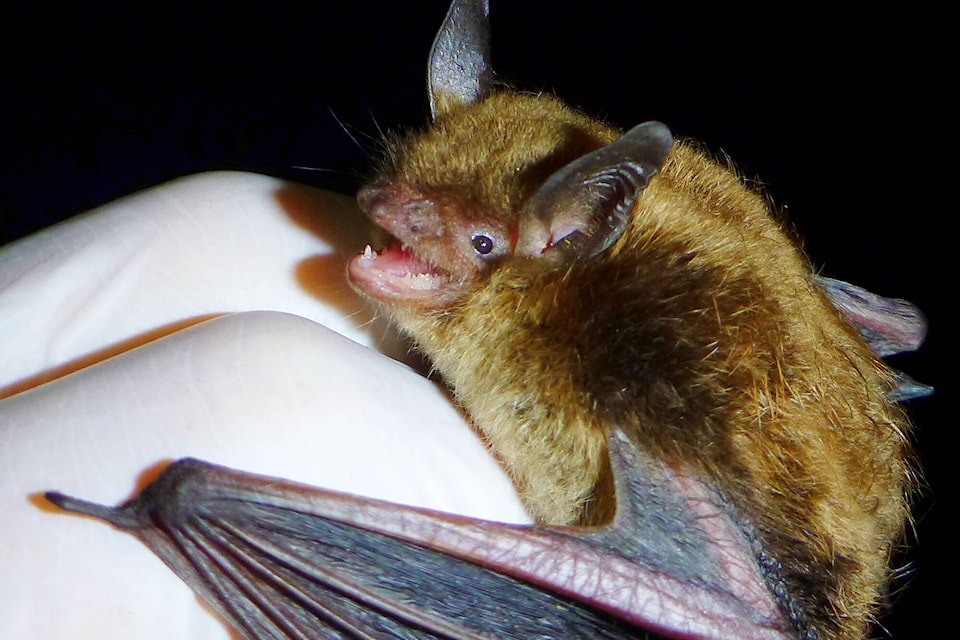This is the second story in a continuing series.
According to American research studies, bats contribute “billions” to the North American economy by providing pest control for agriculture.
In short, the more bugs bats eat, the fewer pesticides farmers need to use.
Unfortunately, the furry little flying mammals are facing a perfect storm of complications, and many species could go extinct by the end of the century.
The effects of “white-nose syndrome,” which is caused by a fungal infection, are already being noticed by people in Eastern Canada.
According to Lisa Wilkinson, a bat biologist with the Government of Alberta, farmers are noticing that with the reduction in bats, their crops do not have the “same level of pest control.”
“Bats are the primetime consumers of nocturnal insects,” said Wilkinson.
Fortunately, while the spores that cause white-nose syndrome have been found in Alberta, the disease has not, though Wilkinson notes that based on events in the East, it is just a matter of time.
White-nose syndrome is in addition to another issue plaguing bats: wind farms.
“In terms of jurisdictions in North America, Alberta has been at the forefront in identifying this as an issue and developing protocols for the industry to track the impacts of wind turbines on bands,” said Wilkinson.
According to Wilkinson, regulations in place require wind farm operators to literally count bat carcasses and if too many are found the companies are asked to make adjustments, curtailments, to their wind production.
Bats are most at risk for six weeks during August and September when they migrate; they mainly fly in the early evening or overnight hours when there is little to no wind.
If wind towers have a cut-in speed of three metres per second, and the company is finding too many dead bats, they could be asked by the province to increase the cut-in speed to five metres per second.
Wilkinson says that the bat mitigation framework was originally established around 2013 and revamped around 2020. She noted that all projects built since then are required to follow it, while projects built before its introduction are exempt.
One problem facing the bats is that not all North American jurisdictions have the same level of mitigation requirements, leading to a patchwork of regulations across Canada and the United States.
“The number of bats being killed is going to have an effect on the bat population,” said Wilkinson.
“This isn’t unique to Alberta, this is North America-wide.”
Wilkinson noted that some research being done in mitigation includes having sonic emitters on the windmill blades to keep bats away, though they have limited effectiveness, and new turbines being designed that have sensors in them that can detect bats and shut down a turbine until the risk to the creature is gone.
“We’re trying to find the best way to make it work for everybody,” said Wilkinson, noting that establishing rules for wind farms and protecting bats is a “balancing act” because when curtailment is in effect, wind farms aren’t producing.
“We do want to support green energy.”
Ultimately, according to Wilkinson, it comes down to supporting the bat populations and maintaining the habitat they need.
“One of the best things we can do is keep them resilient and healthy,” said Wilkinson.
Research is being undertaken on how best to support the creatures, but that research takes time and must be submitted to peer-reviewed journals even when it is complete.
“It takes a while,” said Wilkinson, noting that two teams are continually working on reviewing research and policy.
What remains to be seen is whether a solution will be found before the bat species in Alberta reach the point of no return.
